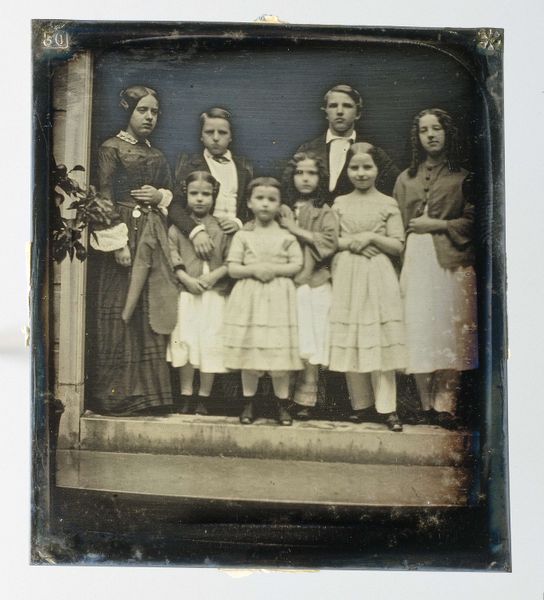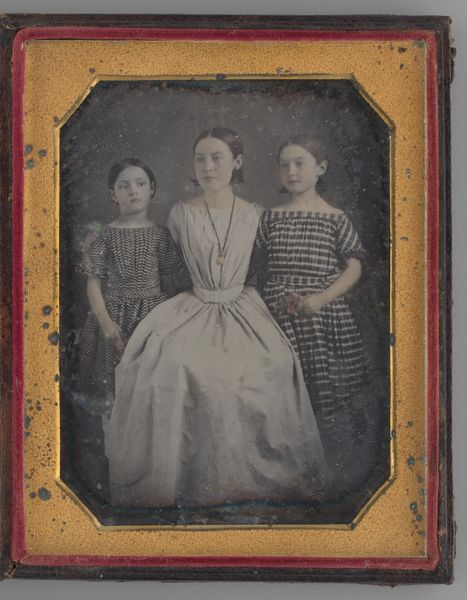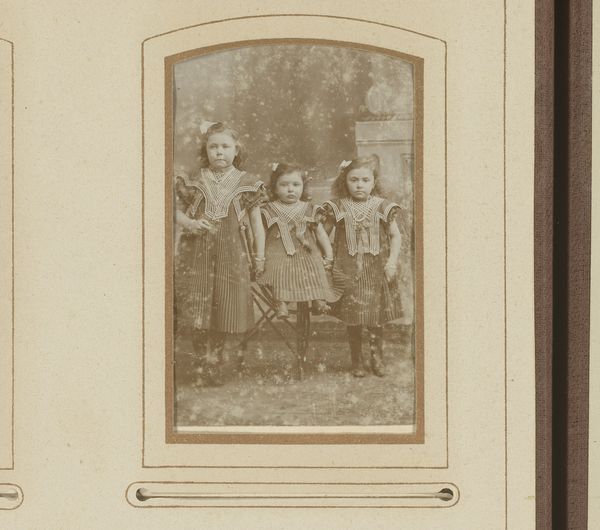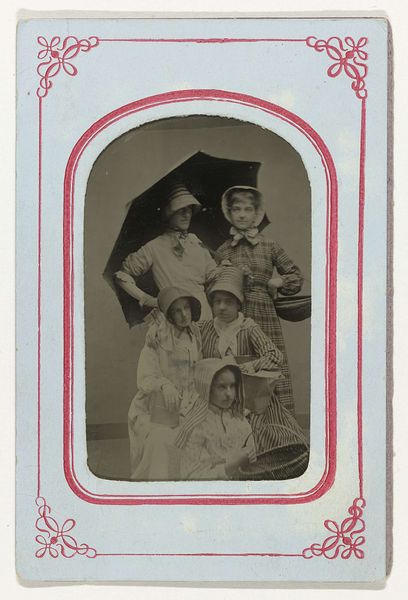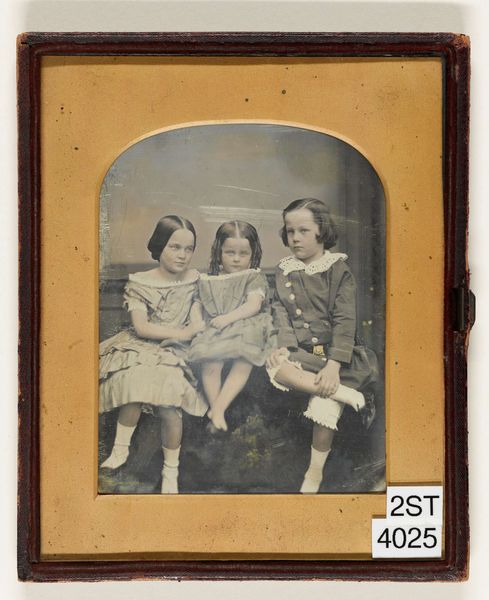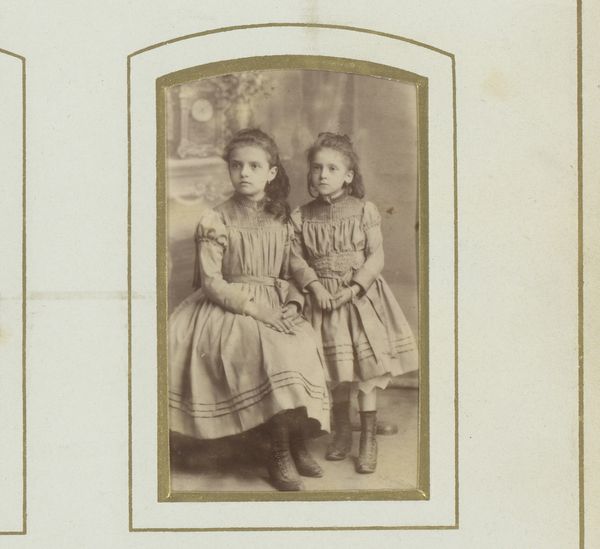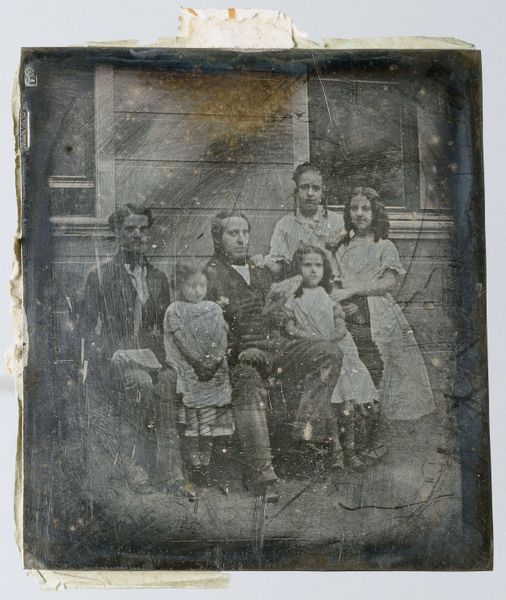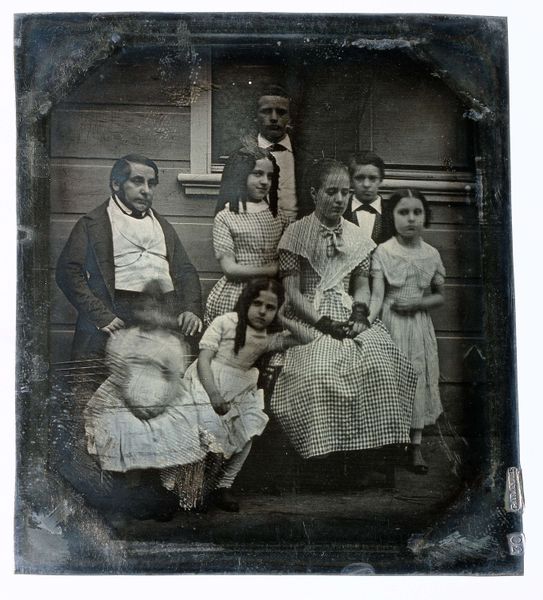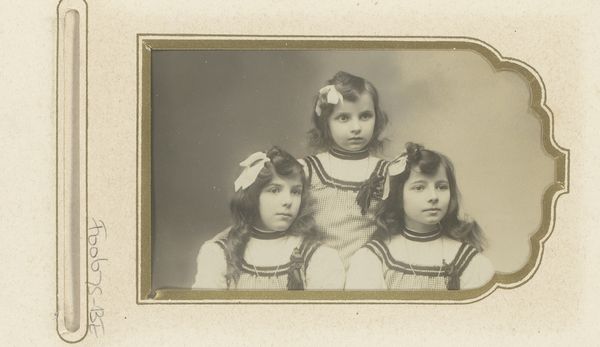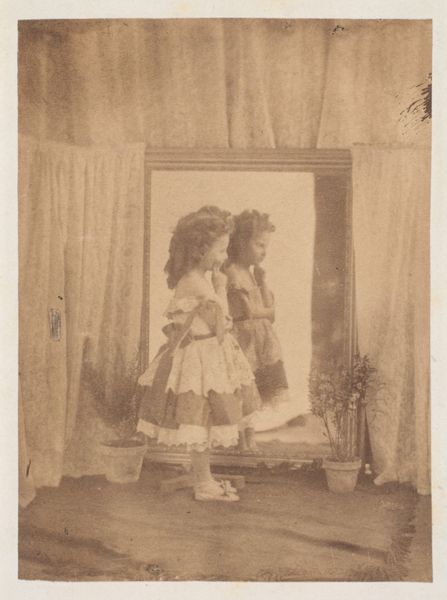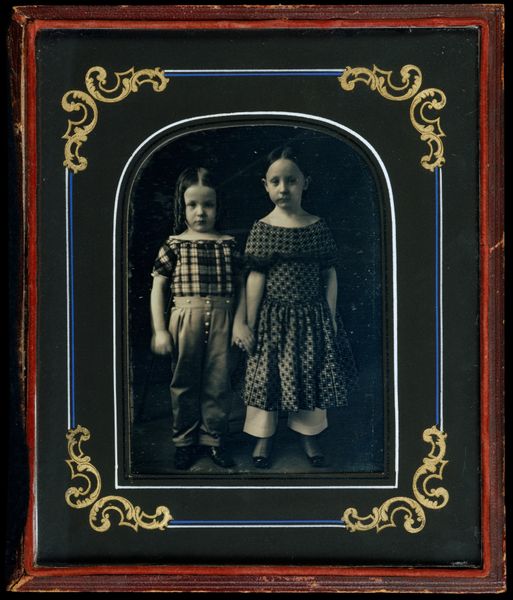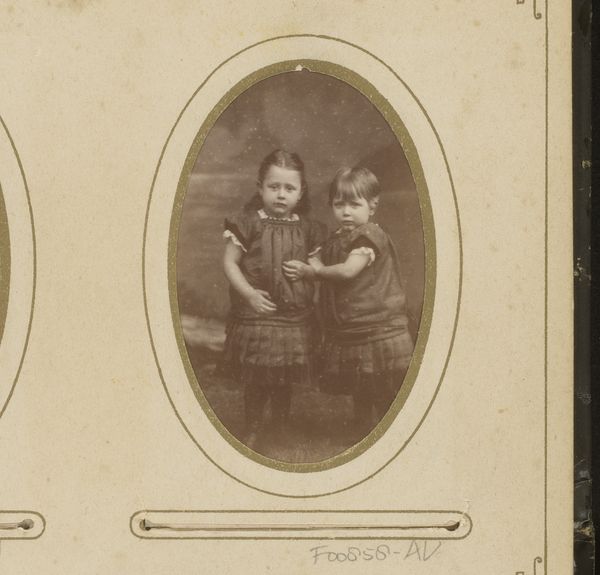
daguerreotype, photography
#
portrait
#
daguerreotype
#
photography
#
oil painting
#
group-portraits
#
genre-painting
#
realism
Dimensions: height 162 mm, width 132 mm
Copyright: Rijks Museum: Open Domain
Curator: What immediately strikes you about this early photograph? It's titled "Family Portrait of Rosa, Jeanne, and Carel Asser," a daguerreotype from around 1850-1855 by Eduard Isaac Asser. Editor: It's melancholy, even severe. The light is subdued, almost funereal. The girls' faces seem locked in place, and yet I keep wondering about the symbolism embedded in this solemn image. Curator: The emotional tone absolutely reflects the conventions and expectations of the era regarding portraiture, but also broader anxieties. Photography at this stage, especially for marginalized communities, represented access and documentation within oppressive systems. Who gets represented, how, and why? The Asser family, of Jewish heritage, were part of an elite social circle, so it's interesting to note the level of staged solemnity they embraced here. Editor: Precisely. Notice the eldest sister’s protective arm around the youngest, she holds a large hat—a sign of aspiration and also responsibility. This domestic imagery, staged against the rigid gaze demanded of them, reflects perhaps not just familial relations, but societal structures looming above them. What would the symbolic vocabulary around childhood have been for these young women in this setting? Curator: The composition itself seems meticulously planned to address those structures, pushing the boundaries of portraiture as pure vanity project. Their matching striped dresses feel intentional; a visual signifier not just of unity, but perhaps of a family striving for assimilation in the Netherlands through overt displays of conformity. Editor: That interplay of expectation and assimilation certainly dominates. These striped dresses—are they codes, signs of some shared ambition, linking past and future? Curator: Maybe so. And even more potent when we consider Asser's involvement as a pioneering photographer and advocate for image rights. Here he may subtly weave threads of visibility and advocacy into a personal narrative. Editor: A quiet assertion in the face of prescribed roles, a layered historical and personal reading of portraiture. I keep seeing something in this captured moment: more than the subjects’ appearance and decorum but about societal impositions and familial hopes woven together. Curator: I concur. The piece acts as a prism through which we observe 19th century constructs and the play of self-representation that they either enforce, or inadvertently unveil.
Comments
rijksmuseum about 2 years ago
⋮
Asser here successfully portrayed the children of his beloved sister Netje. The daguerreotype process was so slow that we can hardly imagine what it was like to pose for the camera. The long exposure time is reflected in the sitters’ faces. Their concentrated gaze and every detail seems engraved in the plate, and it is precisely this aspect that makes such photographs so magical. Active children were the most difficult to portray, as their photographs images could blur so easily.
Join the conversation
Join millions of artists and users on Artera today and experience the ultimate creative platform.
